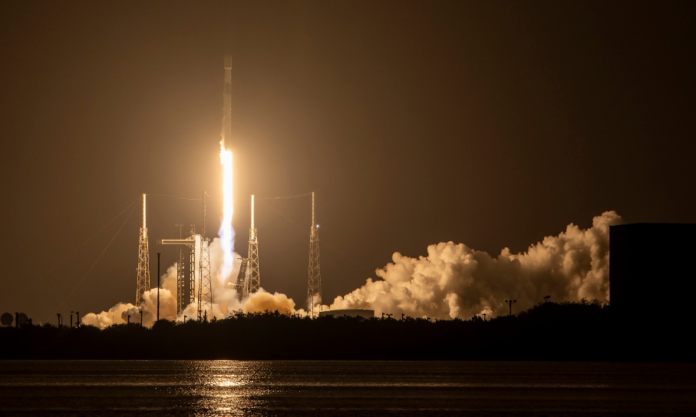An investigation by The New York Times has revealed that Elon Musk leveraged the competing missions of federal agencies to advance his goals for space travel, often at the expense of wildlife protection.
Last month, Elon Musk’s Starship — the largest rocket ever built — successfully launched, marking a significant milestone for SpaceX and the U.S. civilian space program. However, two hours post-launch, the aftermath became evident as a team from SpaceX, the U.S. Fish and Wildlife Service, and a conservation group surveyed the fragile migratory bird habitat around the launch site.
Also Read: SpaceX Successfully Launches and Lands NROL-186 Mission
The impact was devastating. The launch had scattered mud, stones, and fiery debris across public lands surrounding Musk’s $3 billion space compound. Chunks of sheet metal and insulation littered the sand flats of a nearby state park, while a small fire left a charred patch of park grasslands. More distressingly, the ground where a bird’s nest lay the previous day was now stained with egg yolk. None of the nine nests recorded by the Coastal Bend Bays & Estuaries Program survived intact.
“The nests have all been messed up or have eggs missing,” wildlife biologist Justin LeClaire told a Fish and Wildlife inspector, as a New York Times reporter observed nearby.
This incident is part of a troubling pattern. Since 2019, SpaceX operations have caused fires, leaks, explosions, and other environmental issues at least 19 times, highlighting the broader debate over balancing technological progress with ecosystem protection.
The natural tension is exacerbated by Musk’s significant influence over American space ambitions. Members of Congress and senior Biden administration officials have expressed concerns about Musk’s power as the U.S. increasingly relies on SpaceX for commercial space operations and future moon and Mars missions.
The Times’ investigation shows how Musk exploited the limitations and conflicting missions of various agencies to expand his industrial complex, known as Starbase, in South Texas. Agencies responsible for protecting cultural and natural resources, such as the Interior Department’s Fish and Wildlife Service and the National Park Service, often lost out to more powerful bodies like the Federal Aviation Administration (FAA), whose goals align with Musk’s ambitions.
Ultimately, the ecology of South Texas took a back seat to SpaceX’s and the country’s space ambitions.
SpaceX declined to comment, but Gary Henry, a former SpaceX adviser on Pentagon launch programs, acknowledged the environmental concerns and said the company was committed to addressing them. Kelvin B. Coleman, the top FAA official overseeing space launch licenses, defended the agency’s actions, emphasizing the importance of SpaceX’s operations to the civilian space program despite the environmental fallout.
“Blowing debris into state parks or national land is not what we prescribed, but the bottom line is no one got hurt, no one got injured,” Coleman said. “We certainly don’t want people to feel like they’re bulldozed. But it’s a really important operation that SpaceX is conducting down there.”
The conflict in South Texas is likely to resonate at SpaceX’s other launch sites in California and Florida as the company increases the frequency and size of its launches.
This account is based on over 10,000 pages of emails and state and federal records obtained through open records requests, court filings, and federal disclosures, as well as interviews with more than two dozen local, federal, and state officials overseeing the project. These records reveal how SpaceX expanded its operations in South Texas far beyond initial promises.
“They kept saying, ‘No, we are not going to do that, we are not going to do that,’ and then they came back and said, ‘Yes, we are,’” said Mark Spier, former top local official for the National Park Service when the SpaceX project began. “We were being misled.”
Key Points:
- Environmental Impact of SpaceX Operations:
- SpaceX’s rapid expansion in South Texas, particularly at its Starbase complex, has resulted in numerous incidents causing environmental damage since 2019.
- These incidents include fires, leaks, explosions, and habitat destruction, highlighting concerns over wildlife protections.
- Specific Environmental Consequences:
- Following a recent Starship launch, debris scattered across public lands, causing damage to fragile ecosystems and disrupting bird habitats, with multiple nests destroyed.
- Regulatory and Agency Oversight:
- The investigation reveals how SpaceX navigated and sometimes exploited the competing missions of federal agencies like the U.S. Fish and Wildlife Service and the Federal Aviation Administration (FAA).
- Agencies responsible for environmental protection often faced challenges against more powerful entities aligned with SpaceX’s objectives.
- Impact on Wildlife and Local Communities:
- Nearly 500 species of birds inhabit the South Texas area affected by SpaceX’s operations, raising concerns about the long-term impact on biodiversity and local ecosystems.
- Balancing Technological Advancement with Environmental Responsibility:
- The case underscores a broader debate on balancing technological progress, economic growth, and environmental stewardship, particularly in sensitive ecological regions.
- Public and Governmental Concerns:
- Members of Congress and senior Biden administration officials have voiced concerns over Elon Musk’s influence and SpaceX’s operational impact on wildlife habitats and local communities.
- Corporate Responsibility and Future Challenges:
- SpaceX executives have acknowledged environmental concerns and committed to addressing them, amid ongoing scrutiny and regulatory challenges as the company expands its operations nationwide.
- Legal and Regulatory Frameworks:
- The investigation is based on extensive documentation, including emails, court records, and federal disclosures, highlighting the complexities of regulatory oversight and corporate accountability in the space industry.



